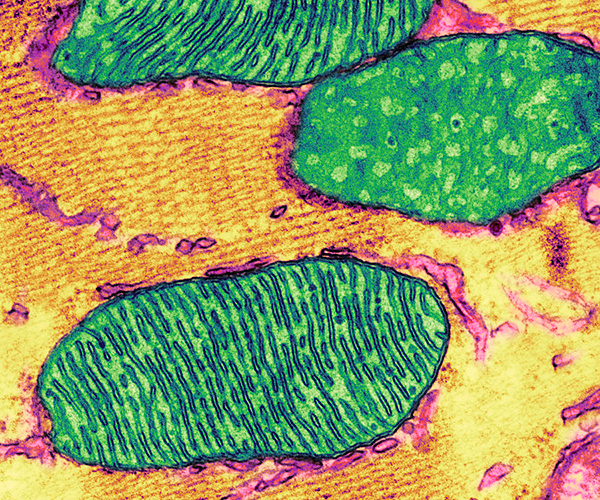
Researchers describe the biochemical pathway that results in the generation of oxidized mitochondrial DNA, how it is expelled by mitochondria and how it triggers the complex and destructive inflammatory response that follows.
Mitochondria are self-contained organelles (they possess their own mini-chromosome and DNA) residing within cells and are charged with the job of generating the chemical energy needed to fuel functions essential to life and well-being.
When stressed, damaged or dysfunctional, mitochondria expel their DNA (mtDNA), oxidized and cleaved, into the cytosol — the fluid within a cell in which organelles float — and beyond into the bloodstream, triggering inflammation. In autoimmune conditions like lupus and rheumatoid arthritis, the amounts of circulating oxidized mtDNA correlate with disease severity, flare-ups and how well patients respond to therapies.
An unanswered question that has plagued the field is whether oxidized mtDNA is simply a biomarker or indicator of disease or something more: a critical player in disease pathology.
In a new study, published the July 13, 2022 issue of the journal Immunity, researchers at University of California San Diego School of Medicine, with colleagues elsewhere, describe the biochemical pathway that results in the generation of oxidized mtDNA, how it is expelled by mitochondria and how it triggers the complex and destructive inflammatory response that follows.
“In addition to charting a new pathway responsible for the generation of inflammation-provoking fragments of oxidized mtDNA, this work opens the door to the development of new anti-inflammatory agents,” said senior study author Michael Karin, PhD, Distinguished Professor of Pharmacology and Pathology at UC San Diego School of Medicine.
When macrophages — a type of white blood cell that detects infections and tissue damage and marshals other immune system cells to respond — are exposed to metabolic danger signals, one of the immediate responses is for mitochondria to rapidly take up calcium ions from the cytosol, which results in the generation of reactive oxygen species that lead to formation of oxidized mtDNA and the opening of pores in the mitochondrial membranes through which oxidized mtDNA escapes.
“However this oxidized mtDNA is large and before it can sneak through the mitochondrial pores, it needs to be chopped into smaller fragments,” said Hongxu Xian, PhD, the study’s first author and a postdoctoral scholar in Karin’s lab. “That job is carried out by an enzyme called FEN1.”
Once chopped by FEN1, oxidized mtDNA fragments enter the cytosol where they can bind with two different sensors: NLRP3 and cGAS. NLRP3 is part of a multi-protein complex called the inflammasome that activates inflammatory responses. cGAS is an enzyme that generates a small molecule that acts as a chemical messenger to encourage production of other cytokines — proteins that stimulate, recruit and proliferate immune cells.
Together, NLRP3 and cGAS spur inflammation, which in autoimmune diseases has characteristically run amok, prompting the immune system to attack and destroy healthy cells and tissues.
The new findings, said Xian, highlight the critical role of FEN1 in fueling the “auto-inflammatory fire.” Importantly, Xian and colleagues have demonstrated that FEN1 inhibitors block NLRP3 and cGAS signaling and thereby prevent the onset of the inflammatory process.
“This work is important not only because it can explain the origin and pathogenesis of common rheumatic diseases, but it can also lead to the development of new biomarkers and treatments for lupus and arthritis,” said Monica Guma, MD, PhD, an associate professor in the UC San Diego School of Medicine and rheumatologist at UC San Diego Health who was not involved in the study. https://ucsdnews.ucsd.edu/pressrelease/how-mitochondrial-damage-ignites-the-auto-inflammatory-fire







Recent Comments